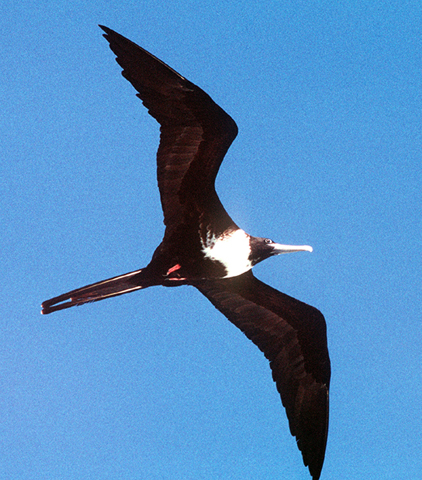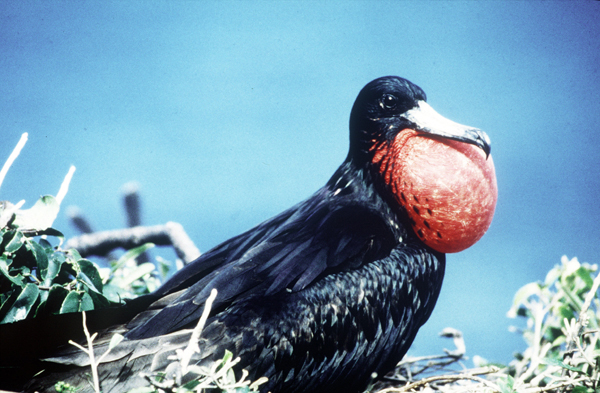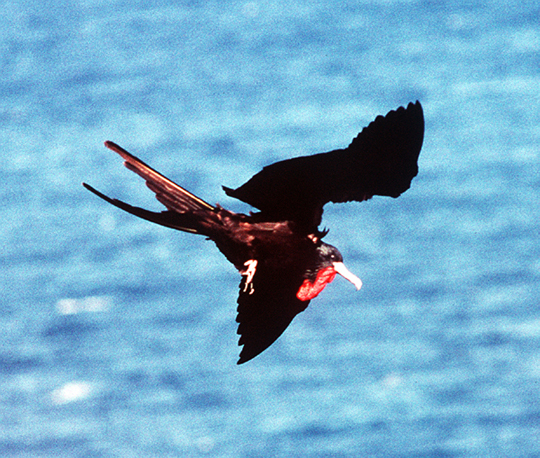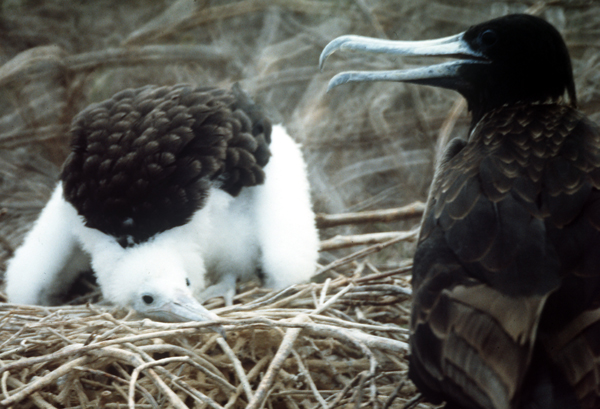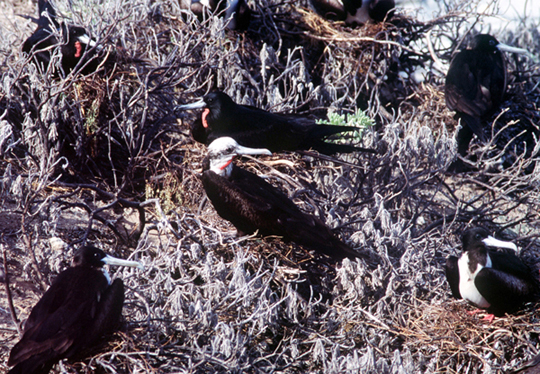|
Magnificent Frigatebird Fregata magnificens Tijerilla,
|
 |
|
Female - Photo:
B. Hallett
|
|
IDENTIFICATION: The frigatebird is distinguished by its large size, its long, forked tail and long, narrow wings. The male is black with greenish iridescence on the back. It has a red throat sack that it inflates in courtship displays. The female (photo above) has a white breast and less iridescence, while the immature bird has an entirely white head---a plumage retained for the first 4-6 years of life. The wingspan is 217-244 cm.---by far the longest wingspan of any West Indian bird. Length: 89-114 cm.; weight: 1,000-1,900 g. Only about 5% of the body weight is bone, the lowest percentage of any bird in the world. VOICE: Does not vocalize except for whinnying noises and bill-clattering on the breeding grounds. Audio (M. Oberle). HABITAT: Feeds in lagoons and at sea. HABITS: The frigatebird can soar at up to 50 km/hour or hover motionless over the ocean in coastal areas---a familiar sight throughout coastal Puerto Rico. It feeds by swooping to the ocean surface quickly and snatching a flying fish, other fish species, jellyfish or squid with its 10-cm. long bill. It also feeds on sea turtle hatchlings as they dash from beach nests to the ocean. The frigatebird is a "kleptoparasite"; it steals much of its food from other birds, such as gulls, terns, pelicans, boobies, tropicbirds, or other frigatebirds. It startles or chases its victim until it forces the victim to drop or regurgitate its catch. The frigatebird then intercepts the falling food in mid-air. The frigatebird does not swim, in part because it has trouble taking off without a strong wind. In addition, the oil gland at the base of the tail is proportionately small compared to other birds, so it cannot waterproof its feathers sufficiently to tolerate prolonged submersion. Unlike many other seabirds, it often returns from the sea to mangrove islands to roost at night. It occasionally soars inland in Puerto Rico, leading to a local expression: "Frigatebird over land, storm at sea." The species has been found hundreds of miles from the ocean in North America after hurricanes. It builds a stick nest in bushes, cacti, or directly on the ground on protected offshore islands. The single, white egg is incubated for 40-54 days, and the young don’t fly until about six months old. The young use their bills like swords to fence with neighboring chicks. Adults continue to feed the young for six months or more after fledging. STATUS AND CONSERVATION: Common in coastal Puerto Rico. Nesting colonies are susceptible to disturbance by human visitors and nest predators. Throughout the Caribbean, frigatebird populations have declined dramatically in the last few centuries. The Caribbean nesting population is estimated at 4,300-5,300 pairs in 25 colonies. The Frigatebird formerly nested on a number of isolated islands around Puerto Rico, such as Desecheo and Culebra, but now nests only on Monito Island. RANGE: Inhabits warmer coastal waters throughout the Western Hemisphere, and also the Cape Verde Islands off West Africa. In Puerto Rico it nests on Monito Island, but can be seen foraging along most coastal areas. San Juan Harbor, especially on the Cataño side, is a regular location. TAXONOMY: PELECANIFORMES; FREGATIDAE |
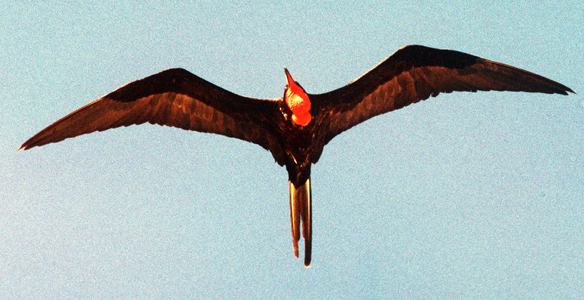 |
|
|
Male -
Photo:
B. Hallett
|

